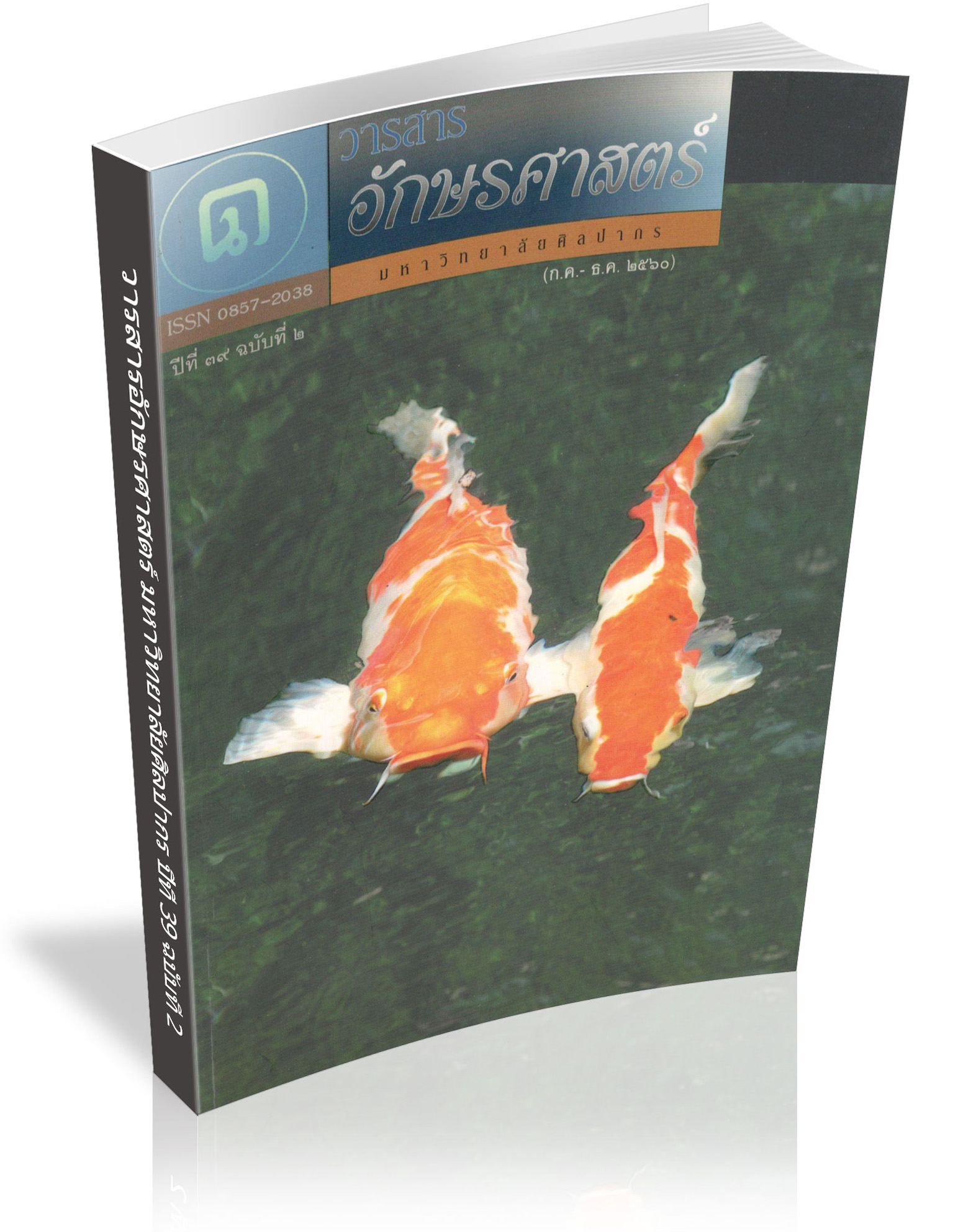The spirit of Taira no Masakado in "ShōmonkiW and "The Tale of Heiji"
The presentation of adherence aspect
Keywords:
Masakado, rebel, beheaded, revengeful spirit, adherenceAbstract
This article aims to study the presentation of adherence of the rebel's spirit named Taira no Masakado in the war tale "Shōmonki" in the Heian period and the war tale "The Tale of Heiji" in the Kamakura period. The study of "Shōmonki" found that the author presented the identity of Masakado as a person who was adherent in power, fame and honor. After being killed by the government, he repented for his karma and discarded the adherence. In the Kamakura period, nevertheless, the author of "The Tale of Heiji" presented another identity. In Minamoto no Yoshitomo, a rebelled warrior, was beheaded and exposed to the public. The author cited an historical incident of Masakado who was beheaded and was exposed to the public, and laughed at his defiance as a victor. This scene reflected the adherence in power of Masakado's spirit as well as. The presentation of the revengeful spirit of Masakado was to make readers realize the revengeful spirit of Yoshitomo. Yoshitomo's spirit was still waiting to restore to his power again. In conclusion, the study of the adherence of Masakado's spirit in both war tales revaled the difference in points of view. The author of "Shōmonki" prewented the adherence causing Masakado to make war against the central government. Consequently, he was killed by the government and suffered in hell. This view can be seen as a strategy to restrain local warriors from rebellions against the government. Meanwhile, the author of "The Tale of Heiji" presented the adherence of a loser spirit who was able to make his clan return to power. The readers can realize that the adherence was harnessed as a power to change the government. Similarly, Minamoto is warriors regained power and took a step to rule the government in the Kamakura period.
Downloads
Downloads
Published
How to Cite
Issue
Section
License
ผู้เขียนบทความต้องยินยอมในข้อกำหนดต่าง ๆ ของวารสารก่อนส่งบทความตีพิมพ์




